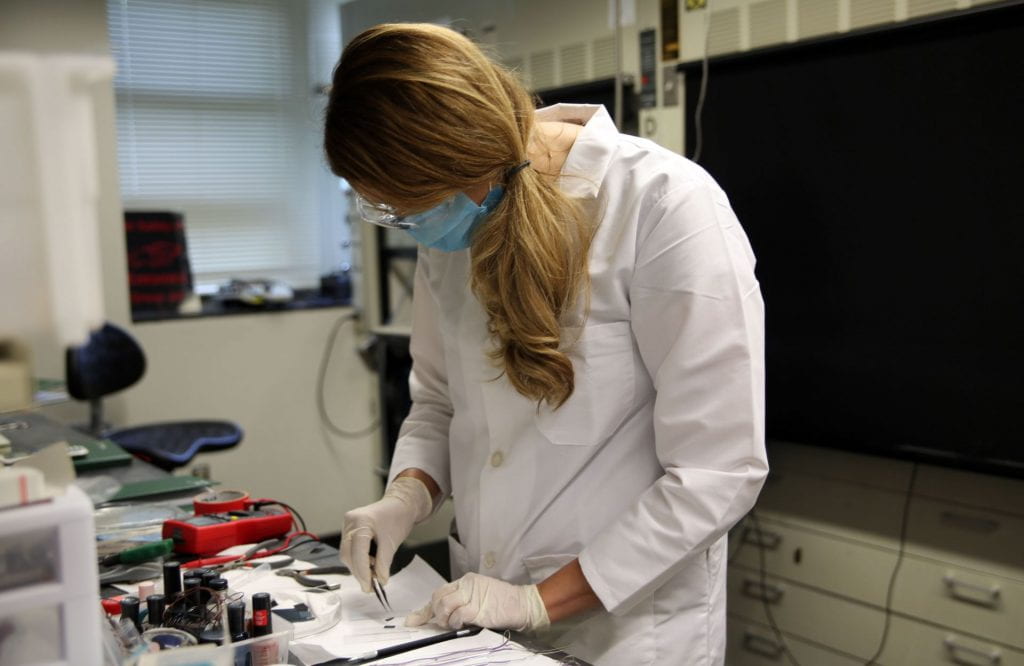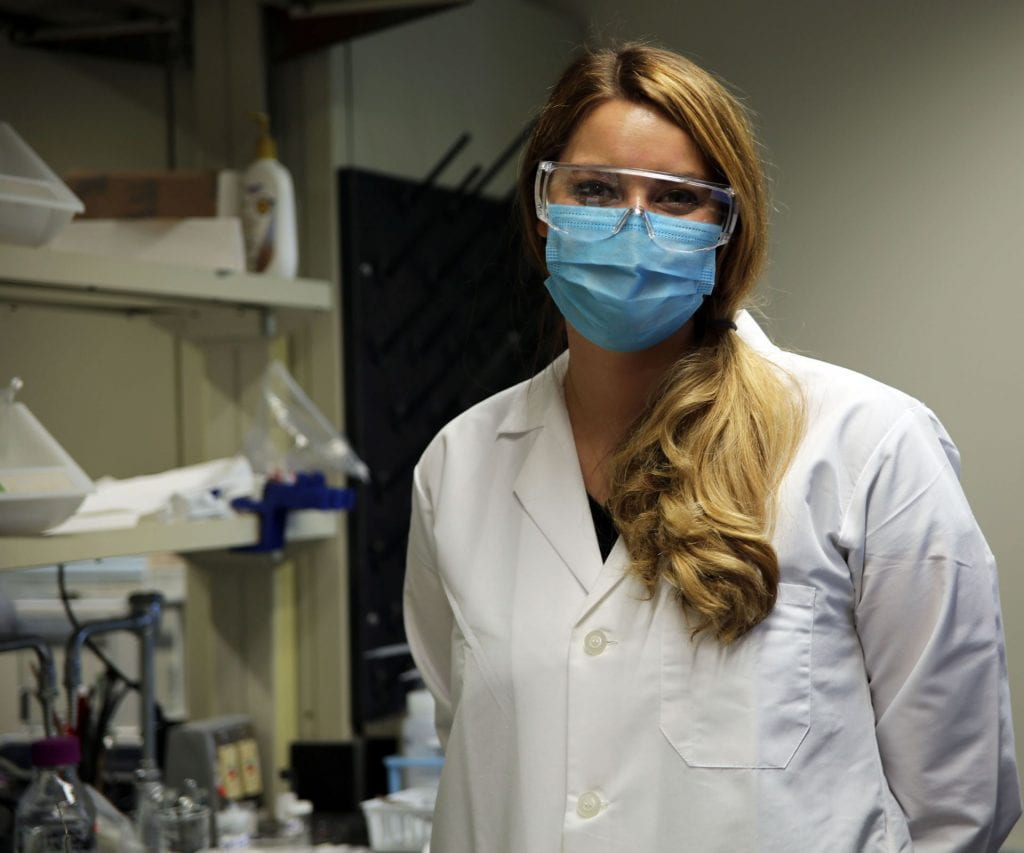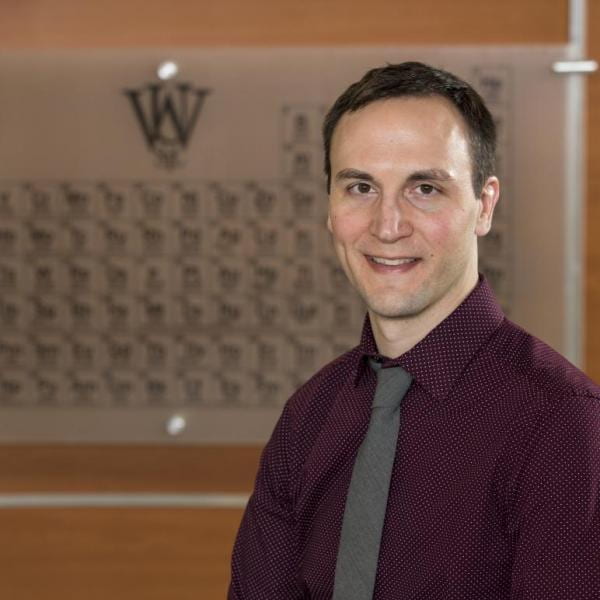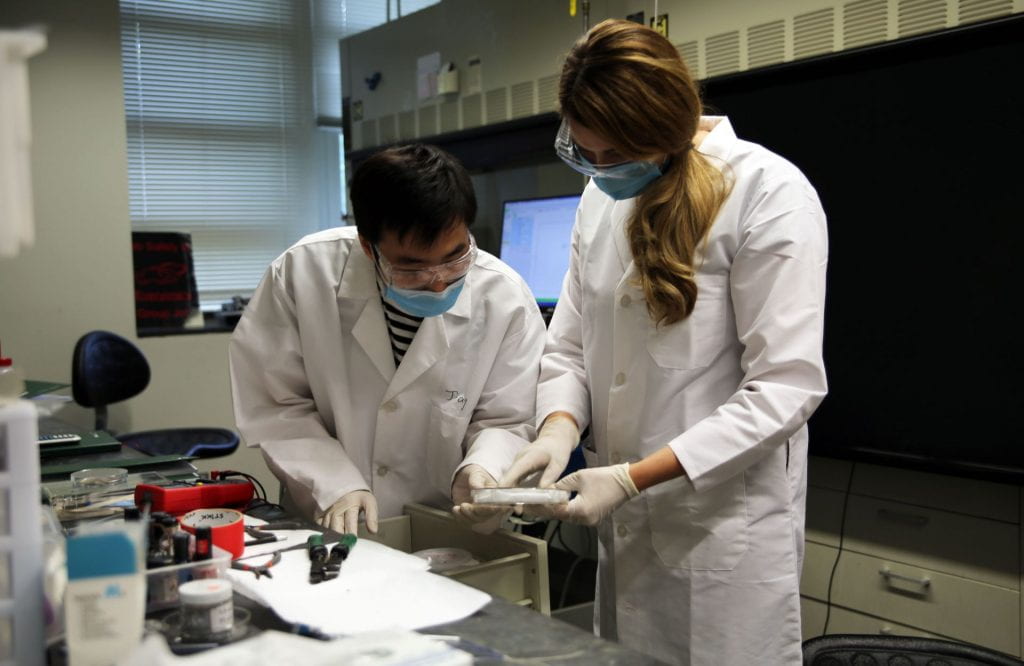It’s mid-July and in a fourth-floor lab at Washington University in St. Louis, Brittany Daugs, sporting goggles and a mask, is carefully cutting silicon pieces into squares and laying them out on glass gel plates.

“I am preparing silicon-coated substrates that will become electro-deposited with bismuth selenide,” she explains. “We will then investigate the growth, morphology, and crystal structure of the bismuth selenide that forms.”

Nearly 10 years into her teaching career, Daugs found herself back on a university campus this summer in the role of a hands-on learner. Through a teacher-researcher partnership initiative, Daugs, a 10th-grade chemistry teacher at Kirkwood High School, is logging 20 hours a week conducting authentic scientific research in chemistry and nanotechnology in the lab of Bryce Sadtler, assistant professor of chemistry. She works alongside graduate students in Sadtler’s research group. This fall, those same graduate students will visit Daug’s classroom where they will transform Daugs’ summer research experience into rigorous lessons for her students.

With the help of Washington University’s Institute for School Partnership (ISP), Sadtler has been supporting local science teachers since 2015. Still, he worried that teachers, exhausted by the extra demands of the school year, would not respond to his summer lab opportunity. But there was interest, and he says Daugs was a great match. She had a strong interest and previous experience in developing classroom demonstrations that connect the properties of materials we can see and feel (such as color, hardness, magnetism) to their atomic structure.
For Daugs, the summer research opportunity fills in a piece of her teaching career that’s been missing.
“This has helped me to see, experience, and be a part of science in action.”
Brittany Daugs, Kirkwood High School
“I didn’t know how a research lab worked at all, and to be a high school teacher who is influencing some students to go into this field, and not knowing what happens, and the next steps, is problematic,” she says. “This has helped me to see, experience, and be a part of science in action.”

She’s thrilled to see first-hand what is happening at the graduate level in chemistry and filter it down to her students. She can’t wait to take what she’s learning back to her classroom.
“I now have fresh ideas for what to do in my own classroom and a new perspective on best practices in science education.”
Brittany Daugs, Kirkwood High School
“I think there is a large misconception that research is repetitive and that each day looks the same. This could not be further from the truth! Every day I have gotten to experience something new, to dive into the chemistry behind the phenomenon, and to talk to chemists about why they were inspired to take this path,” she says. “I now have fresh ideas for what to do in my own classroom and a new perspective on best practices in science education.”
While the general public often believes teachers take summers off, a significant number actually spend summer engaged in professional development. The ISP helps facilitate a variety of those experiences from curriculum development to lab experiences to book clubs and workshop speaking engagements.
“A lecture. A workshop. Lab experience. There are many ways to facilitate active collaborative partnerships between university faculty and the K-12 community,” says ISP Executive Director Victoria L. May.






The ISP helped Sadtler coordinate and develop a successful hot topics summer workshop for high school chemistry teachers. The success of that workshop led him to start looking for teachers for the teacher-researcher partnership.
“They are connected with teachers in the region. They are experienced at running these types of programs. That’s very valuable,” he says.
Prior to Daugs, Kathleen Dwyer, a science teacher at Maplewood Richmond Heights High School spent a summer researching in Sadtler’s lab. The ISP facilitated Dwyer’s placement in Sadtler’s lab. For two years after the lab experience, Sadtler and his graduate students visited Dwyer’s classroom and presented lectures and conducted experiments with students.
Daugs’ partnership with Sadtler will continue into the school year. Sadtler and his team of graduate students will visit Daugs’ school and implement electrochemistry lessons as part of an afterschool program. As part of the partnership, Sadtler and Daugs will co-develop curriculum, translating Daugs’ summer research experience into rigorous lessons for her students.
Sadtler views his mentorship of teachers as an investment in the future of the country.
“Where I see myself potentially having more real-world impact is on trying to train younger generations about alternative energy sources,” Sadtler says. “Teaching students this aspect of chemistry could help them in their future education and potentially guide them to STEM careers.”
Media Contact Myra Lopez